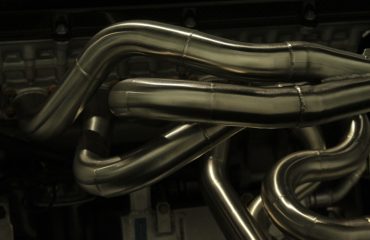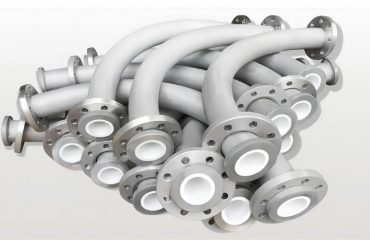Multi-story steel buildings are transforming the modern cityscape, offering a blend of strength, flexibility, and sustainability unmatched by traditional construction methods. This comprehensive guide delves into the world of multi-story steel building solutions, exploring the design considerations, construction techniques, advantages, and challenges involved.
Design Considerations for Multi-Story Steel Structures
Designing a multi-story steel building requires meticulous planning and expertise. Engineers must consider several crucial factors, including:
- Structural Integrity: The design must account for wind loads, seismic activity, and the weight of the building materials and occupants. Advanced computer modeling and Finite Element Analysis (FEA) are essential tools for ensuring structural stability and safety.
- Fire Safety: Steel’s susceptibility to fire necessitates incorporating fireproofing measures such as spray-on fire-resistant material (SFRM) or intumescent coatings. Compartmentalization strategies, including fire-rated walls and doors, are also crucial.
- Building Codes and Regulations: Adherence to local, regional, and national building codes is paramount. These codes dictate requirements for structural strength, fire safety, accessibility, and other aspects of building design and construction.
- Architectural Aesthetics: While strength and functionality are primary concerns, the aesthetic appeal of the building cannot be overlooked. Steel’s versatility allows for creative architectural designs, fostering unique and visually striking structures.
- Sustainability: Increasingly, sustainable design principles are integrated into multi-story steel buildings. This includes using recycled steel, minimizing embodied carbon, and optimizing energy efficiency through features like high-performance glazing and efficient HVAC systems.
Construction Techniques for Efficient Steel Building Erection
The construction of multi-story steel buildings involves a series of precise and efficient steps. Modern construction techniques prioritize speed, safety, and minimizing disruption:
- Prefabrication: Off-site prefabrication of steel components significantly accelerates the construction process. Components are manufactured in a controlled environment, ensuring accuracy and quality before being transported to the site for assembly.
- Modular Construction: Modular construction takes prefabrication a step further by creating entire modules (sections of the building) off-site. These modules are then transported and assembled on-site, reducing construction time and labor costs.
- High-Strength Steel: The use of high-strength steel allows for lighter and more slender structural members, reducing material costs and improving overall efficiency.
- Advanced Joining Techniques: High-strength bolts, welds, and other advanced joining techniques ensure strong and reliable connections between steel components, enhancing the structural integrity of the building.
- Crane and Lifting Equipment: Heavy-duty cranes and lifting equipment are essential for the efficient placement of steel components during construction. Careful planning and coordination are crucial for safe and timely erection.
Advantages of Choosing Multi-Story Steel Building Solutions
Multi-story steel buildings offer numerous advantages over traditional construction methods:
- Speed and Efficiency: Steel construction is significantly faster than traditional methods, leading to quicker project completion and reduced overall costs.
- Cost-Effectiveness: While initial material costs might seem higher, the speed and efficiency of steel construction often lead to lower overall project costs.
- Design Flexibility: Steel’s versatility allows for a wide range of architectural designs and building configurations, catering to diverse functional needs.
- Durability and Longevity: Steel structures are highly durable and resistant to damage from weather and other environmental factors, ensuring a long lifespan.
- Sustainability: Steel is a highly recyclable material, and modern steel construction techniques incorporate sustainable practices to minimize environmental impact.
Addressing Challenges in Multi-Story Steel Construction
Despite the numerous advantages, challenges exist in multi-story steel construction:
- Corrosion: Steel is susceptible to corrosion, necessitating protective measures such as coatings, galvanization, or other corrosion-resistant treatments.
- Transportation and Handling: Transporting and handling large steel components requires careful planning and specialized equipment to ensure safety.
- Skilled Labor: Steel construction requires skilled labor, and a shortage of qualified professionals can impact project timelines and costs.
- Cost Fluctuations: Steel prices can fluctuate, impacting project budgets. Careful planning and risk management are essential to mitigate this risk.
- Site Constraints: Limited site access or challenging site conditions can complicate the construction process and increase costs.
Future Trends in Multi-Story Steel Building Technology
The field of multi-story steel building construction is constantly evolving. Future trends include:
- Increased use of advanced materials: High-performance steels, composite materials, and other innovative materials will further enhance the strength, durability, and sustainability of steel structures.
- Greater integration of Building Information Modeling (BIM): BIM will play an increasingly crucial role in optimizing design, construction, and lifecycle management of steel buildings.
- Automation and robotics: Automation and robotics will enhance efficiency and precision in steel fabrication and construction.
- Sustainable design practices: The focus on sustainable design will continue to grow, with greater emphasis on reducing embodied carbon and enhancing energy efficiency.
- Smart building technologies: Integration of smart building technologies will enhance building performance, occupant comfort, and overall sustainability.
In conclusion, multi-story steel building solutions offer a compelling combination of strength, flexibility, and sustainability. By understanding the design considerations, construction techniques, advantages, and challenges, stakeholders can make informed decisions and leverage the full potential of this transformative construction method.
Tags: Multi-story steel buildings, steel construction, high-rise steel structures, steel building design, sustainable steel construction




